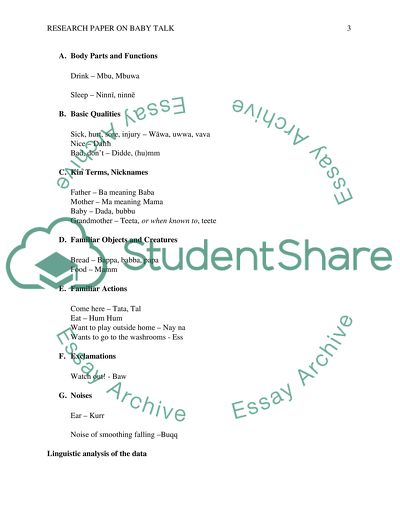Cite this document
(“Baby talk Research Paper Example | Topics and Well Written Essays - 1750 words”, n.d.)
Retrieved from https://studentshare.org/humanitarian/1667753-baby-talk
Retrieved from https://studentshare.org/humanitarian/1667753-baby-talk
(Baby Talk Research Paper Example | Topics and Well Written Essays - 1750 Words)
https://studentshare.org/humanitarian/1667753-baby-talk.
https://studentshare.org/humanitarian/1667753-baby-talk.
“Baby Talk Research Paper Example | Topics and Well Written Essays - 1750 Words”, n.d. https://studentshare.org/humanitarian/1667753-baby-talk.


